From Ghosn to Makoto Uchida, Nissan's 'seven-year itch'
![]() 03/19 2025
03/19 2025
![]() 620
620
Since Ghosn, Nissan has been working hard to make a comeback every day.
At a meeting on March 11, Nissan Motor's board of directors decided that due to the company's poor performance and the collapse of business integration negotiations with Honda, CEO Makoto Uchida would resign early on March 31, and be succeeded by 46-year-old Chief Planning Officer Ivan Espinosa.
Another CEO with the title of 'firefighter' is out. The entire press conference lasted less than 20 minutes, announcing the change of Nissan's helmsman and determining the direction of Nissan Motor's fate.
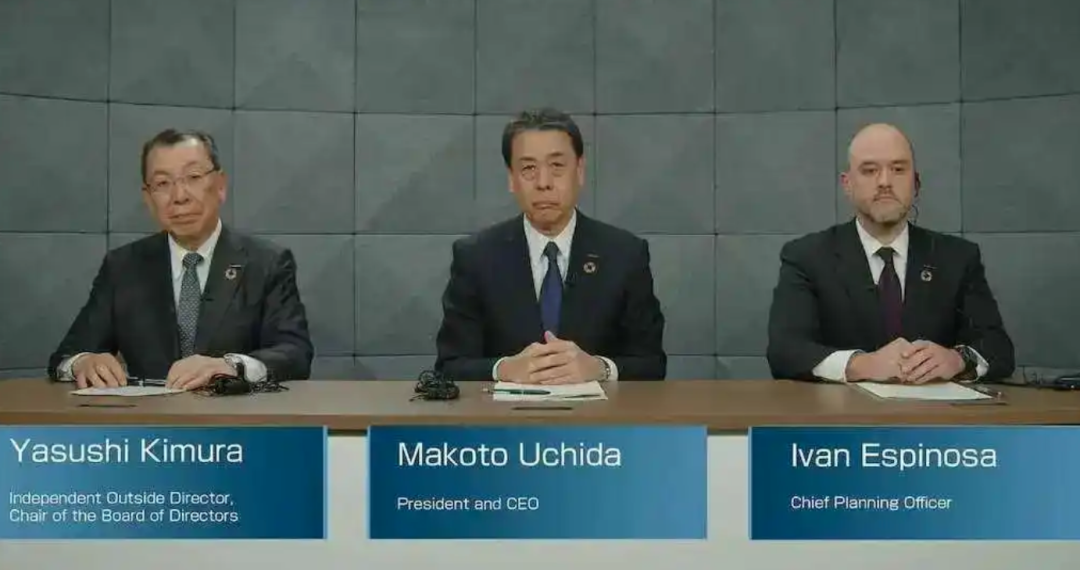
Hasty?
Not hasty, nor prudent.
In seven years, Nissan Motor has changed four CEOs. Apart from Carlos Ghosn, every appointment and departure has seemed insufficiently 'thoughtful'. However, facing internal and external troubles, Nissan does not have more time to make more thoughtful considerations.
Makoto Uchida also seems unprepared for his 'dismissal'.
He said he was in an awkward situation and had unfulfilled ambitions. However, Nissan is no longer prepared to give him a stage. With regret, he left a farewell message, "Nissan should not be like this, it should not stop here. I hope Espinosa can inspire the best in employees and bring the company back to the growth track, making a comeback."
In fact, carefully calculated, since Ghosn, Nissan has been working hard to make a comeback every day.
Ghosn, from savior to prisoner
Ghosn's story is clichéd, but it must be said that Nissan Motor's current situation is due to Ghosn's actions.
At that time, Louis Schweitzer, then CEO of Renault Group, believed that Renault was too small in scale and overly reliant on the European market, lacking sufficient risk resistance. Ghosn also planned to explore a broader world.
'All we need is Nissan,' which was interpreted at the time as a 'gamble'.
When everyone thought that acquiring Nissan was a self-inflicted problem, wasting hard-earned money on reckless debt, Ghosn bet his good reputation and future on a 'big gamble' for Renault-Nissan.
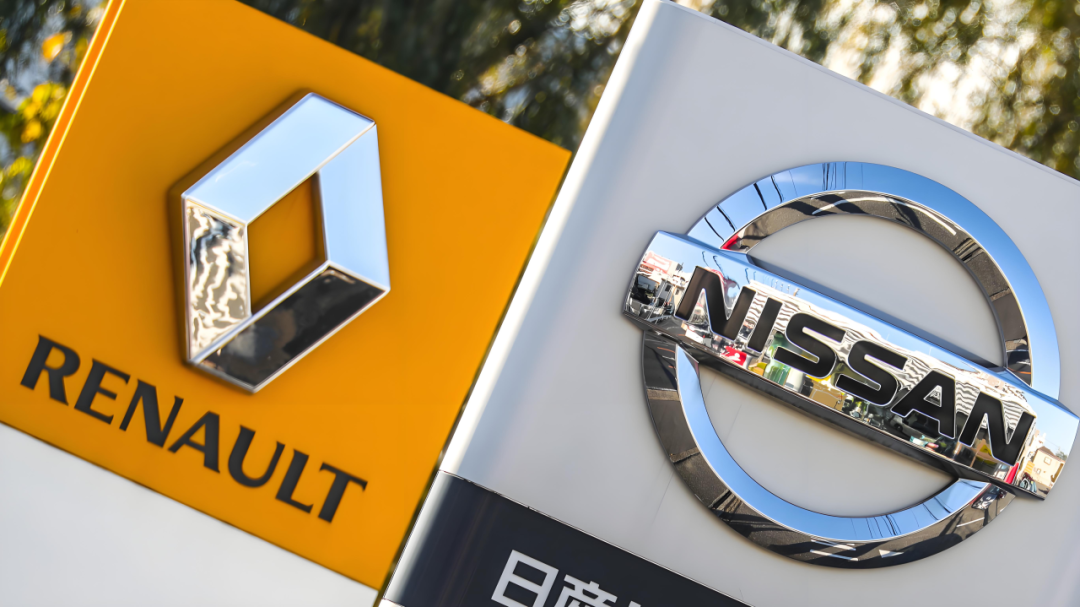
'A once-in-a-lifetime opportunity that history will never grant a second time,' even though the chances of success were only 20%, Ghosn still chose to go all in and launched a three-year revival plan. Recalling this history, Ghosn described his state of mind at the time with the words 'Providence is watching'.
After taking office, Ghosn used his trump card, drastically reducing costs, closing five factories, laying off about 210,000 employees, and selling a large number of shares to reduce Nissan's huge debt. He quickly broke Japan's rigid inertia of 'lifetime employment' and 'seniority-based pay' and replaced it with a performance-oriented compensation plan, turning Nissan around in just one year.
The growing Renault-Nissan Alliance also won Ghosn countless accolades. 'The most powerful man in the automotive industry,' 'cost killer,' and 'one of the men Japanese women want to marry the most' were all once labels for Ghosn.
Of course, under the glory, Ghosn's drastic actions led to more than half of the board seats being removed, and 'touching the cake of Japan's lifetime employment system' also foreshadowed the 'sudden downfall' of Ghosn's fate later on.
Ghosn's management style was fast, ruthless, and accurate. He claimed that multiculturalism was very important for the management team, but within Nissan, it was believed that Ghosn had two sets of standards, one for others and one for himself.
Ghosn steered Renault and Nissan, two companies separated by more than 20,000 kilometers. He fairly divided his time between the two companies for 10 days each month, and spent the remaining 10 days flying to dealers, suppliers, or business negotiations around the world. However, the two ends of the alliance were not connected by a scale but by their respective abacuses.
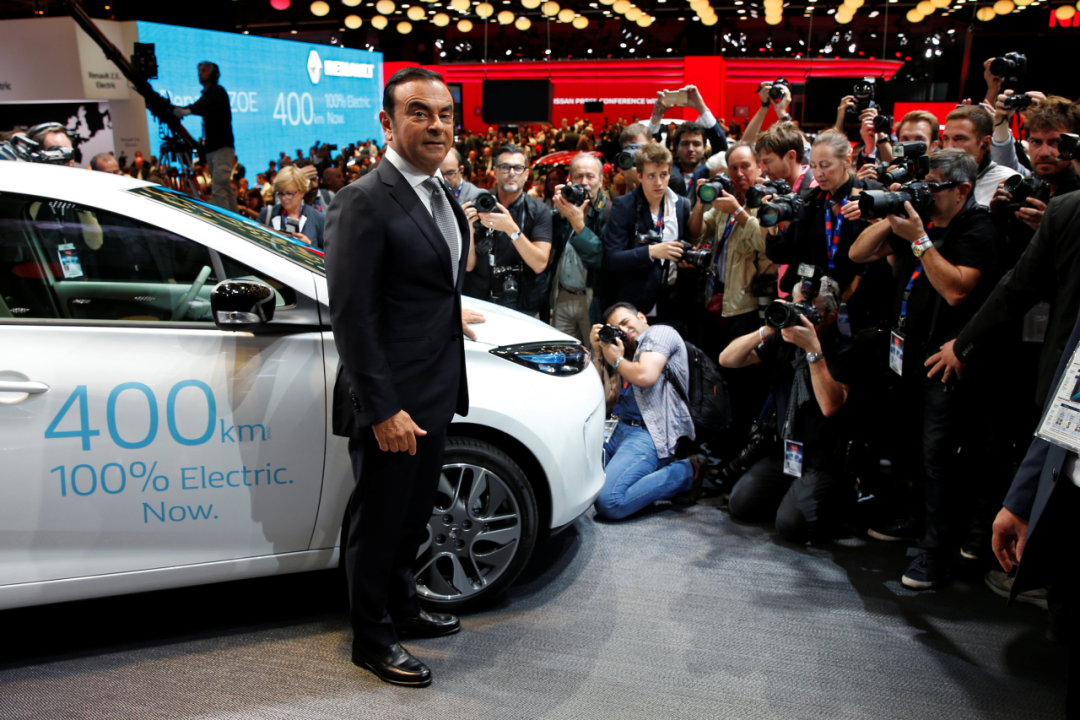
Nissan believed that Renault was enjoying Nissan's thick profits. From sales data, Nissan Motor's sales from 2011 to 2018 were 45% higher than those of Renault. Nissan contributed more than half of Renault's revenue, and the French government, a major shareholder with a 15% stake in Renault, was eager to increase its equity in Nissan.
The delicate balance became increasingly difficult to sustain.
Meanwhile, in 2016, Nissan Motor acquired a 34% stake in Mitsubishi Motors, giving Ghosn an opportunity to lead the alliance to achieve a leap into the top three. Ghosn hoped that the Renault-Nissan-Mitsubishi Alliance could stabilize in the top three under his leadership, rewriting the global automotive market map in his hands.
To maintain the balance between Renault and Nissan and the dream of being in the top three globally, Ghosn deepened cooperation within the alliance.
On September 15, 2017, Ghosn led the formulation and release of the 'Alliance 2022' goal, planning to develop 12 new pure electric vehicles by 2022 based on a new electric vehicle modular platform and components applicable to multiple market segments. Deploy electric vehicle models for market segments such as China, Japan, the United States, and Europe. The goal is to sell 14 million vehicles and generate revenue of $240 billion throughout the year.
At this time, the trend of electrification and intelligence was gradually becoming clear. Ghosn hoped to use the deeper integration of the alliance to cope with the coming wave of electrification.
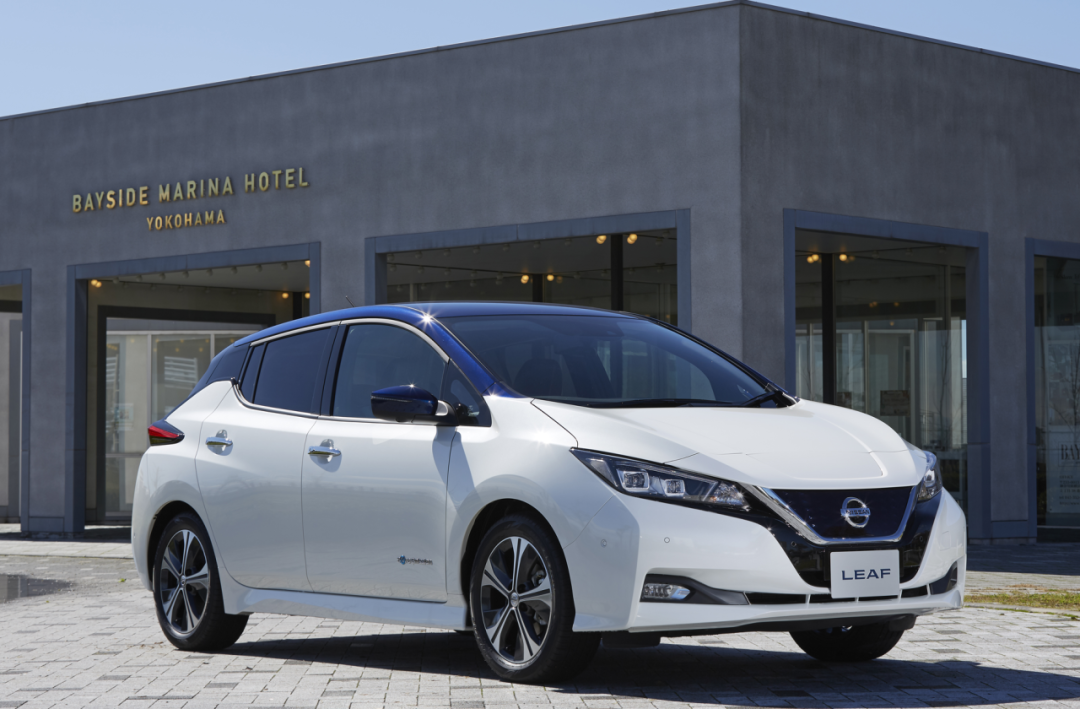
It is not an exaggeration to say that Ghosn had foresight. In fact, Ghosn had long seen the development prospects of electric vehicles. When the pure electric vehicle market was still in its infancy, Nissan released the pure electric vehicle model Nissan LEAF at the end of 2010, becoming the world's first truly mass-produced pure electric vehicle and surpassing the technical scope of competitors at the time.
However, Nissan did not share Ghosn's vision, and even Hiroto Saikawa, who was Ghosn's deputy at the time, felt panicked, seeing this as a signal of a full merger between Renault and Nissan.
'Merger'?
No, for Nissan, this was Renault's 'bad intention' to annex Nissan, and Ghosn was the traitor who lobbied the French government to gain more control over Nissan. At the same time, the saying 'killing Japanese and fattening Frenchmen' was widely circulated.
Under Ghosn's leadership, Nissan had already been turbulent. Nissan, unwilling to be annexed, decided to write a script for Ghosn's 'dismissal'.
On November 19, 2018, Ghosn arrived at his penthouse office at Nissan's Yokohama headquarters as he had done many times before when arriving in Tokyo. However, before he could even leave the airport, the four big words 'Ghosn Arrested' mercilessly appeared in the newspapers, causing an uproar in the industry. People regretted that Ghosn's 'lust for power' prevented him from waving goodbye after proving his greatness and letting his honor remain forever.
The empire created by Ghosn himself buried his glorious years in a merciless manner and threw the fate of Nissan Motor into 'turmoil'.
'Confusion'
What has the alliance become after Ghosn?
A tangled mess.
New projects stagnated, and the joint business units led by Ghosn underwent round after round of structural adjustments. The succeeding CEOs, whether it was Thierry Bolloré of Renault who supported Ghosn or Hiroto Saikawa who exposed Ghosn, could not escape the fate of a one-year tenure.
At that time, Japanese media often used the term 'confusion' to describe Nissan in the 'post-Ghosn era'.
On April 8, 2019, Nissan Motor held an extraordinary shareholders' meeting, where shareholders successively questioned the future of Nissan and the responsibility of the current management. At that time, Renault and Nissan were engaged in a fierce battle for control of Nissan, and the entire group was shrouded in the shadow of purges and infighting.
In response to shareholders' questions, Nissan CEO Hiroto Saikawa bowed his head and apologized to shareholders. During the approximately two-and-a-half-hour Q&A session, shareholders grilled Saikawa severely.
Regarding the questioning of Nissan's future, Saikawa had no better answer. Coupled with the fact that changing CEOs every year led to stagnation in Nissan's business and a sharp drop in profits, Nissan laid off 12,500 employees globally and saw its share price evaporate by nearly a third between 2018 and 2019.
Although Saikawa was somewhat enthusiastic about re-election, the total market value of Nissan in 2019 was nearly 300 billion yen less than in 2018 when Ghosn was arrested. When shareholders were casting opposing votes, Saikawa resigned in September 2019 due to a salary scandal.
On December 1 of the same year, Makoto Uchida officially took office as the global CEO of Nissan Motor.
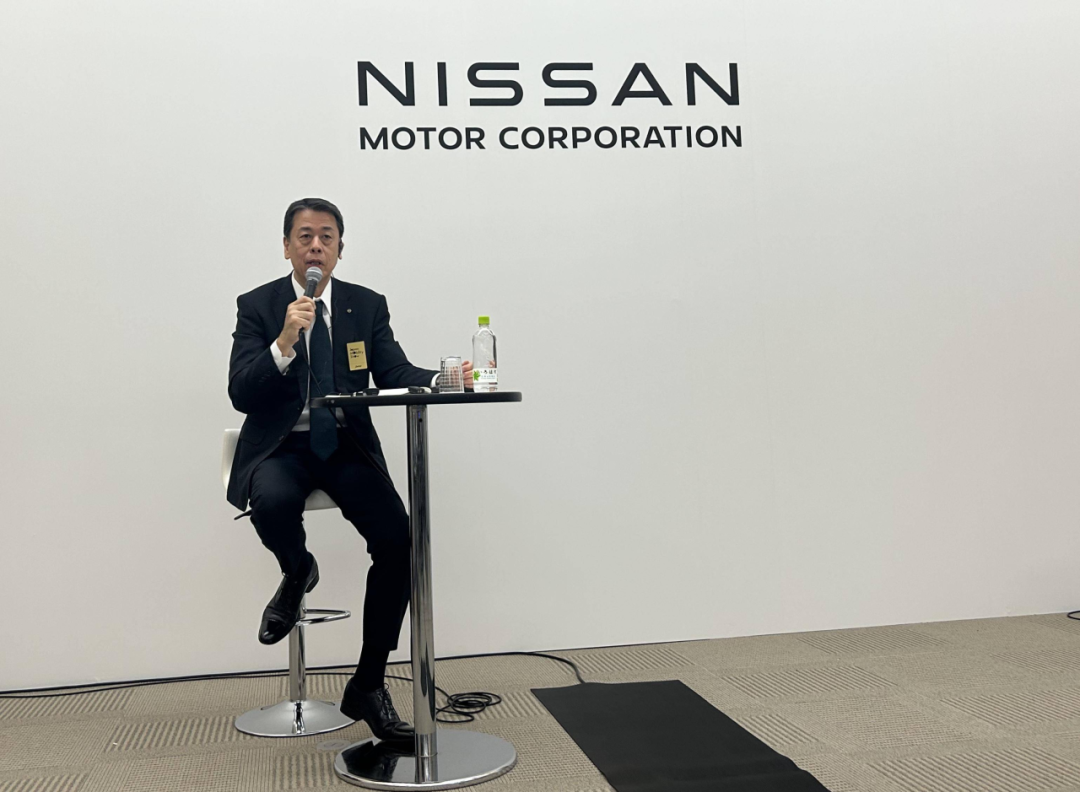
A major reason for Makoto Uchida's 'surprise' rise to power was the strong endorsement of China's performance. In 2018, Nissan's sales in China increased by 2.9% year-on-year to 1.564 million units, setting a new record high for six consecutive years and contributing nearly one-third of the group's revenue.
Makoto Uchida joined Nissan in 2003 and has served as Vice President of Nissan and Global Vice President of the Renault-Nissan-Mitsubishi Alliance. After Ghosn stepped down in 2018 and his successor Hiroto Saikawa was investigated and resigned in 2019, Makoto Uchida took over the heavy responsibility of revitalizing Nissan.
As the 'firefighter' of the post-Ghosn era, to some extent, Makoto Uchida was qualified. After taking office, Nissan released the 'Nissan Next' mid-term transformation plan in 2020. This plan can be described as a 'cut off an arm to survive' reform, with the core being cost reduction, operational optimization, and focusing on core markets and models.
By streamlining global production capacity by 20%, rationally optimizing the global product line by 15%, reducing fixed cost expenditures by 350 billion yen, and simplifying the global management structure into four core markets, forming a more streamlined and responsive organizational structure, Nissan successfully turned a profit in 2021. In fiscal years 2022 and 2023, earnings exceeded expectations.
In his first year in office, Makoto Uchida decided to completely shatter the shadow left by Ghosn.
On July 15, 2020, Nissan announced that it would replace its logo. The new Nissan logo with a rounded shape has the meaning of 'the rising sun', symbolizing rebuilding the brand and shaking off negative market perceptions. The old logo, which began in 2001, was used for 19 years under Ghosn's leadership.
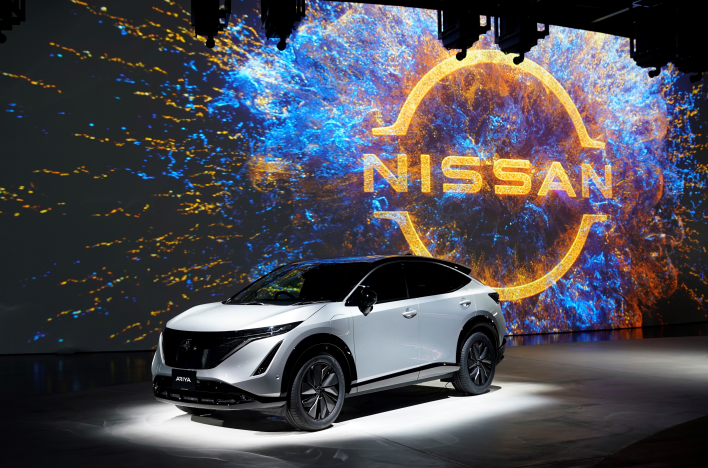
Makoto Uchida said, 'As the 'face' of Nissan Motor in the new era, it will play a leading role in driving Nissan's rebranding.' He also announced that 12 new models would be launched in the next 18 months, heralding Nissan's imminent 'restart'.
Also in 2020, Ghosn predicted, 'They say they want to turn the Ghosn era over. Indeed, the Ghosn era is over, but the fact now is that these three brands have no future.'
Makoto Uchida did not believe this prediction. He gave Nissan a reassurance and made a breakthrough in Nissan's most vigilant autonomy.
When Ghosn led Renault to acquire Nissan in 1999, Renault held a 43% stake in Nissan, while Nissan only held a 15% stake in Renault without voting rights. The unequal ownership and voting decision rights between the two sides were also one of the catalysts for Ghosn's arrest.
After taking office, Makoto Uchida was committed to improving the relationship between Nissan and Renault. After repeated consultations, an agreement was finally reached in 2023 that both parties would hold 15% stakes in each other. Renault will transfer the 28.4% stake it holds in Nissan Motor to a French trust institution, and the voting rights of the trustee will remain 'neutral' for most decisions.
This means that Nissan has realized its long-held wish to 'stand on equal footing' with Renault, which can be considered a major achievement for Makoto Uchida.
Under the new alliance model, Nissan is responsible for leading the development of autonomous driving systems, the new electric platform CMF-EV, and the development of compact and mid-size vehicles; Renault is responsible for the development of electrification architecture, electronic and electrical architecture, small displacement gasoline and diesel engines, and mini and small vehicles. Mitsubishi has fewer tasks and only claims plug-in hybrid technology.
In front of the plan, each has their own abacus. Osamu Masuko, the former chairman of Mitsubishi Motors, once said, 'No one can be like Ghosn, who has both personal charm and tight control, managing Renault, Nissan, and Mitsubishi in an orderly manner.'
Makoto Uchida, indeed, cannot do it.
It seemed that the era of Ghosn was about to turn over, but Ghosn's prediction came true. 'The alliance is left with only an empty shell.'
20 minutes, Nissan hastily replaced its CEO
From a financial perspective, Makoto Uchida, the 'firefighter', was also qualified. What went wrong for him to be ousted early?
It's in the Chinese and American markets. In these two core markets, Nissan Motor not only lost its traditional advantageous positions but also failed to 'catch up' in the new energy market, despite getting an 'early start'.
In 2019, Nissan's sales in the Chinese market reached 1.5469 million units, accounting for nearly one-third of global sales, when Makoto Uchida took office as global CEO. Since then, Nissan's sales in China have declined for five consecutive years, falling to 696,600 units in 2024, a decrease of 54.75% compared to 2019.
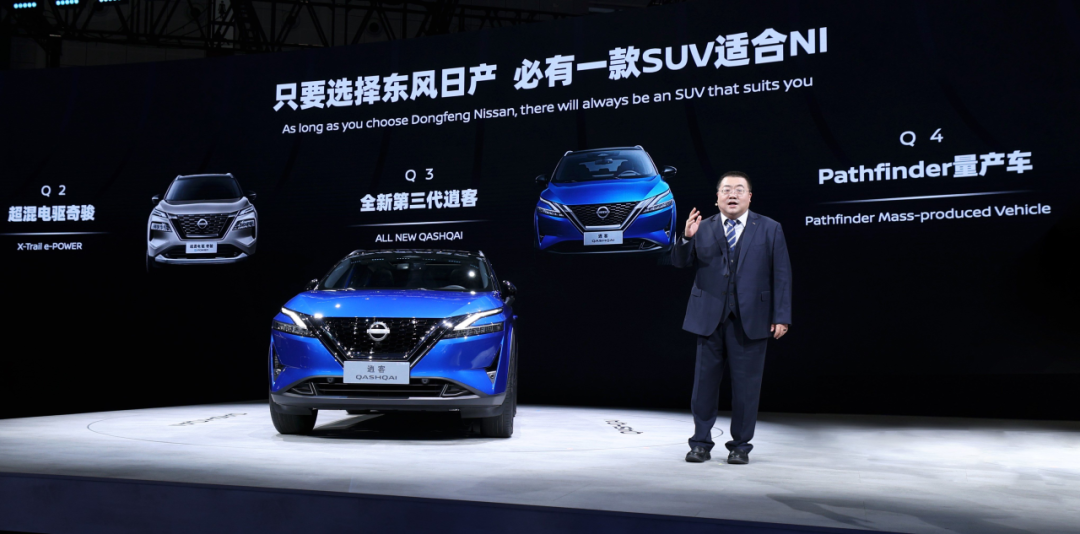
In the North American market, Nissan's sales have also experienced a significant decline. Although Nissan increased sales in fiscal year 2023 by introducing new models and optimizing sales strategies, it lagged behind Toyota and Honda in launching hybrid models.
Nissan's global sales also fell from 4.93 million units in 2019 to 3.3487 million units in 2024, a decline of 40% in five years. Although profit growth was achieved in fiscal years 2021-2023, fiscal year 2024 took a sharp turn for the worse, with a projected net loss of 80 billion yen for the full fiscal year, forming a huge contrast with the initially forecast net profit of 380 billion yen.
In addition, Nissan's difficulties also stem from its struggles in the field of new energy. Especially in the US market, where it has a first-mover advantage, Nissan lags far behind Toyota and Honda. The Nissan Leaf, launched at the end of 2010, was two years earlier than the first Tesla Model S delivered, but it has long become a thing of the past.
According to data from Cox Automotive, a US research firm, Toyota and Honda have performed particularly impressively in the hybrid market, together accounting for up to 70% of the market share. In February this year, Honda saw a sales increase of 3%, followed closely by Toyota with a 2% increase.
Hybrid models have become the key to sales success in the US market. Nissan is not standing idly by and has made multiple efforts for change.
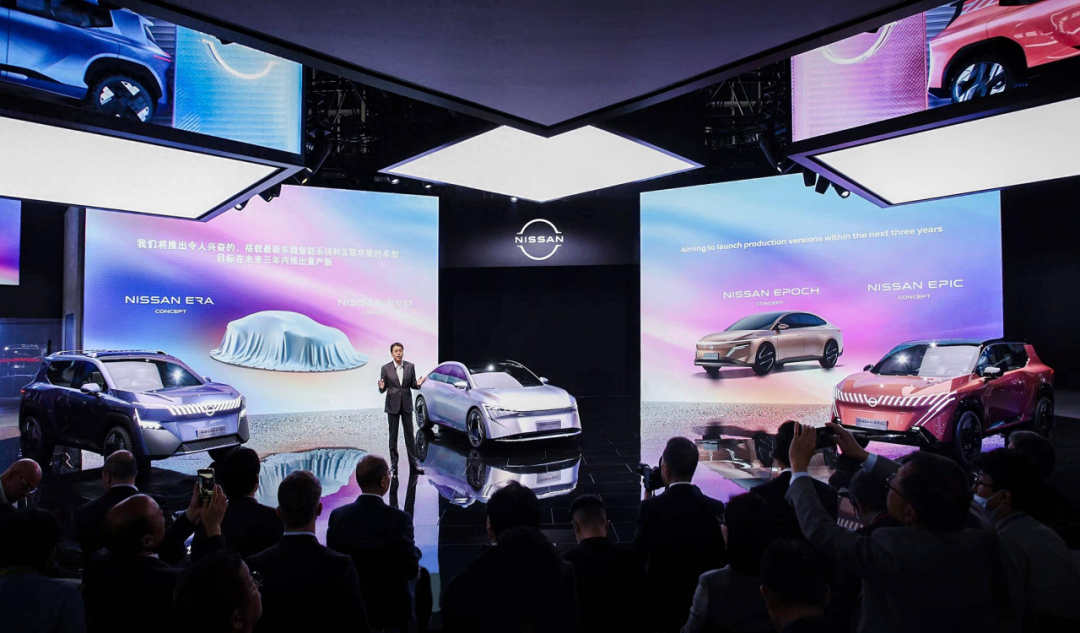
Since the launch of the "Nissan 2030 Vision" in 2021, Nissan has expanded its investment in electrification and worked to increase the number of pure electric vehicle models. Unfortunately, the number of actual electrified products that have been launched is very small.
US auto critic Matt believes that if Nissan hopes to launch models that meet user expectations in the US market, it must avoid launching dull products like the ARIYA or outdated ones like the Leaf. He points out that "the US market has a greater need for hybrid vehicles."
In the Chinese market, Nissan's electrification strategy has also achieved minimal results. The pure electric model ARIYA, which marked the brand's relaunch with a new logo, only sold 2,114 units throughout the year, making it difficult to shoulder the hope of Nissan's revival.
For now, Nissan can only rely on fuel-efficient models such as the Sylphy and X-Trail to struggle through. Nissan's problem, in the final analysis, is that it is too dependent on fuel vehicles and has failed to seize the wave of new energy in a timely manner.
Reuters reported that insiders mentioned when discussing Makoto Uchida's report on deteriorating financial conditions that the CEO attributed the main reason for the decline to weak sales and profitability in North America and China.
He knows where the problem lies. The failure of drastic reforms to demonstrate growth is the fundamental reason why Nissan's internal team wants to remove Makoto Uchida.
The last straw that broke the camel's back was the collapse of the cooperation plan between Nissan and Honda.
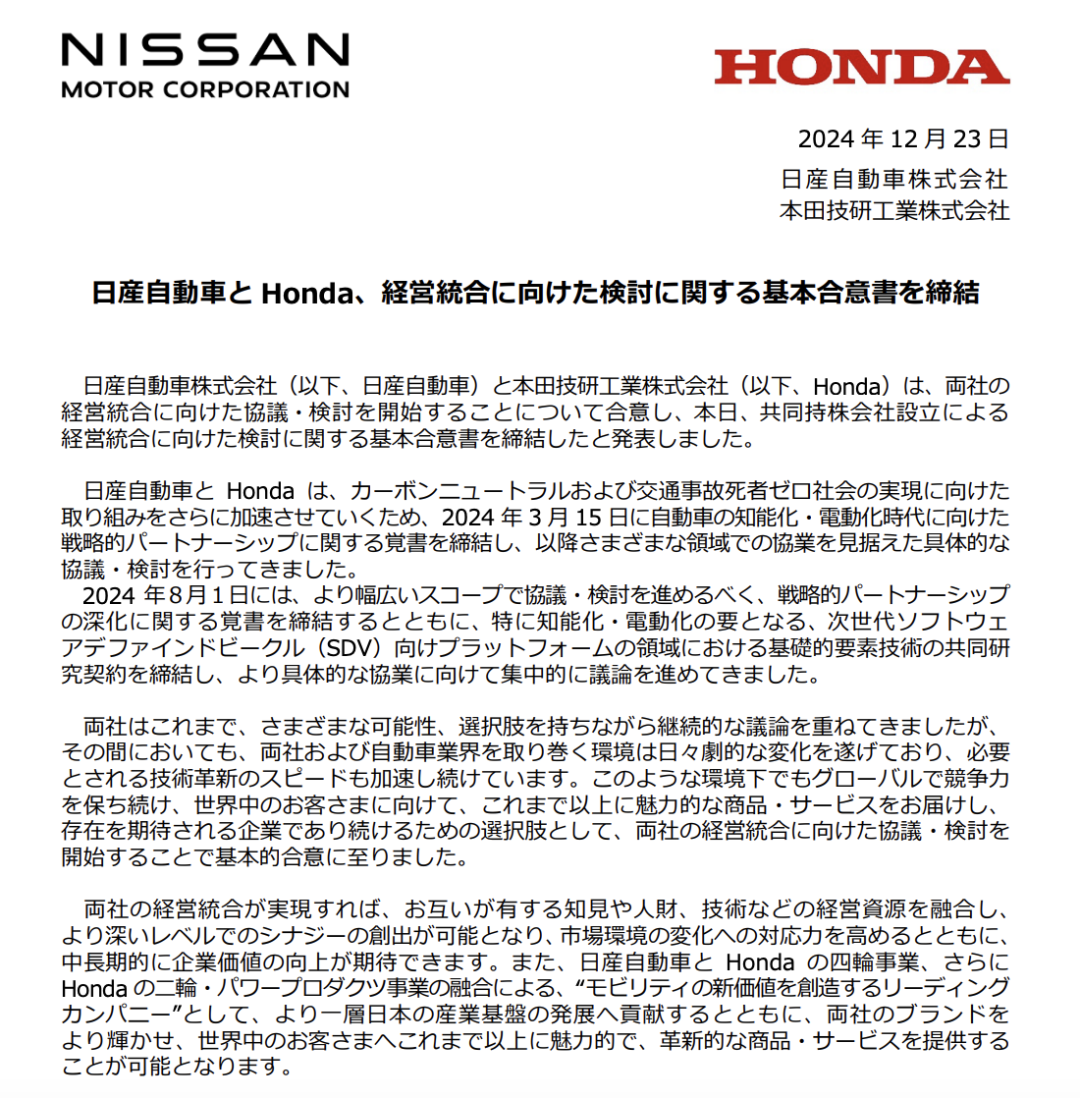
On December 23, 2024, Honda and Nissan announced the signing of a memorandum of understanding to initiate merger negotiations aimed at establishing a holding company through business integration. Makoto Uchida was one of those within Nissan who strongly advocated for a deal with Honda.
However, Honda later changed course and intended to acquire Nissan. Honda President Toshihiro Mibe was dissatisfied with the slow progress of Makoto Uchida's decision-making. He also informed Makoto Uchida that Nissan must become a subsidiary of Honda, shocking Nissan, which was overwhelmed with a familiar sense of humiliation and tension, just like the years under Renault's control.
Under unequal dialogue, the merger negotiations between the two sides broke down. While the merger negotiations were terminated, Makoto Uchida still hoped to continue pushing forward the "turnaround" strategy under his leadership.
Makoto Uchida stated that once Nissan returns to the path of recovery, he will consider resigning, and if required by the board of directors, he will resign even earlier. However, he hopes to stay until 2026, saying, "It would be irresponsible to resign if the company's current situation remains unchanged."
But he also knows that he has no chance.
Some members of Nissan's board of directors, such as senior executives of the Mizuho Financial Group behind Nissan and Nissan's Chairman Yasushi Kimura, support the proposal to become a subsidiary of Honda. They fear that if Nissan does not reorganize with Honda, it will have no chance of turning the situation around.
It is reported that Honda is preparing to restart negotiations under a new Nissan leadership that can better handle internal objections. This means that the prerequisite for reopening negotiations with Honda is that Makoto Uchida must step down.
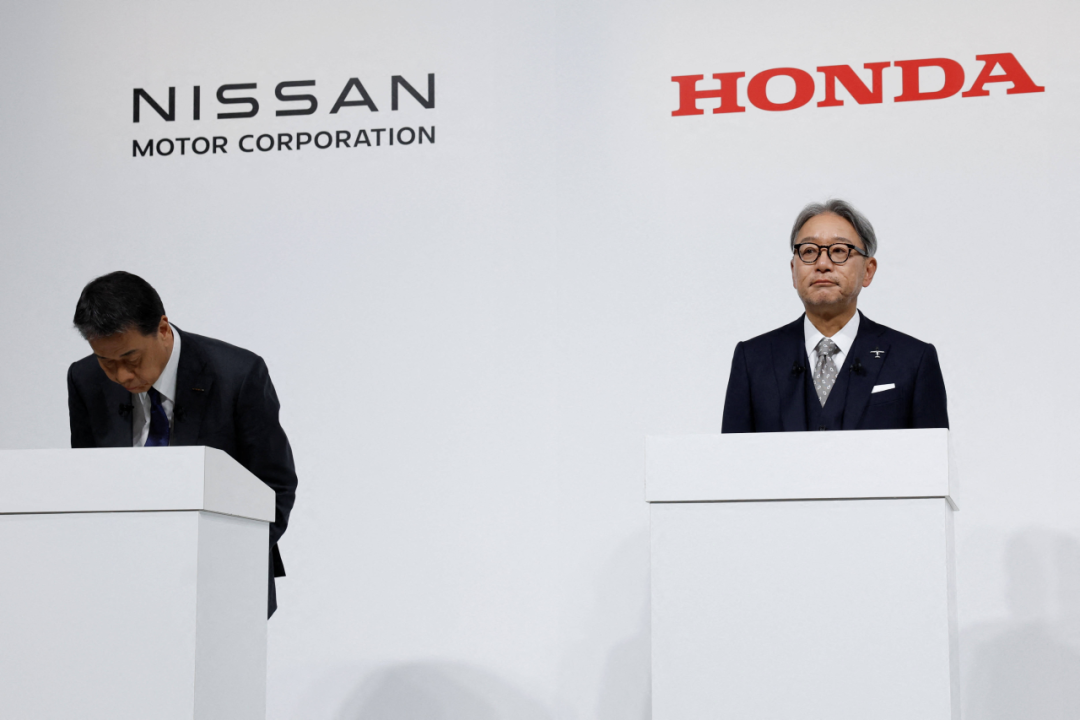
On the afternoon of March 11, in Tokyo, Nissan announced in a brief 20-minute press conference that Makoto Uchida would step down one year earlier, and that Ivan Espinosa, Nissan's 46-year-old Chief Planning Officer, would take over.
Espinosa is a veteran of Nissan and has been with the company for 22 years, just like Makoto Uchida. He was shocked by his appointment. However, beyond the surprise, Espinosa said he needed time to consider how to lay out the strategic level.
Why was Espinosa chosen? Makoto Uchida's answer is that Espinosa is more familiar with technology than himself and can better leverage Nissan's strengths. For Espinosa, just as when Makoto Uchida took over, Nissan is waiting to be "saved."
"Since taking office as president in 2019, I have always emphasized that Nissan should not stop here. This belief remains unchanged. I firmly believe that Nissan will definitely be able to revive," Makoto Uchida said in his speech on March 11.
However, the magic wand is no longer in Makoto Uchida's hands. Espinosa's appointment as Nissan's global CEO marks the second time that a foreign executive has taken the helm of Nissan after Ghosn.
Nissan COO Toshiyuki Shiga once said: The most impressive thing about Ghosn, and something I can never imitate, is his unwavering determination.
Perhaps, the faltering Nissan is also yearning for Ghosn's iron-fisted approach to saving the company from collapse.
Note: Some images are sourced from the internet. If there is any infringement, please contact us for removal.







